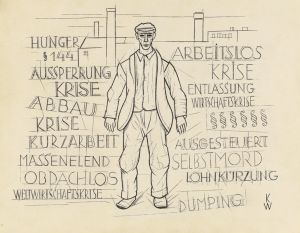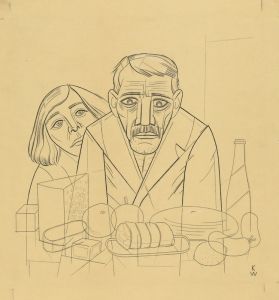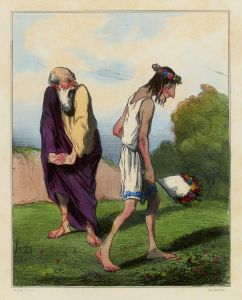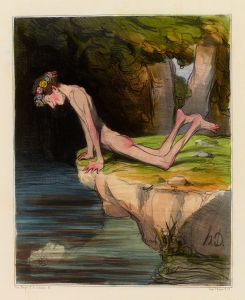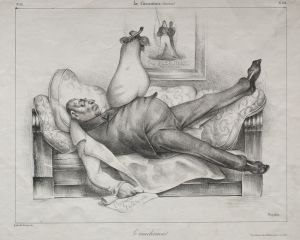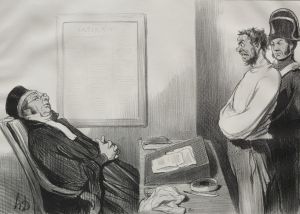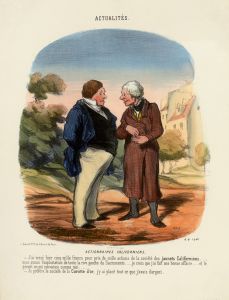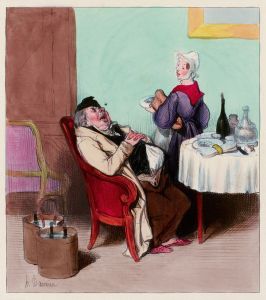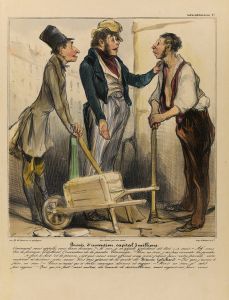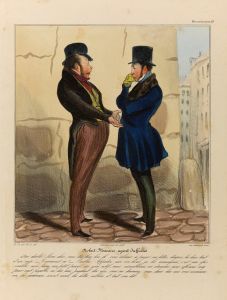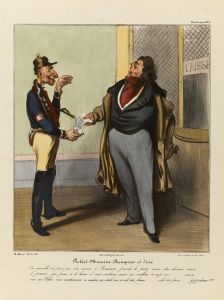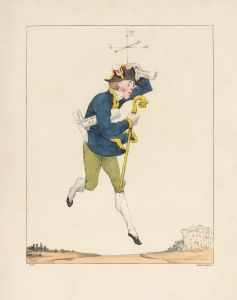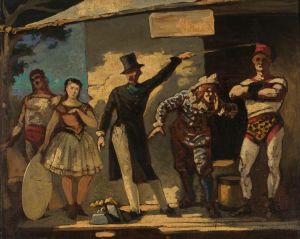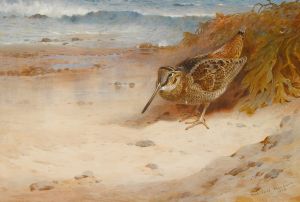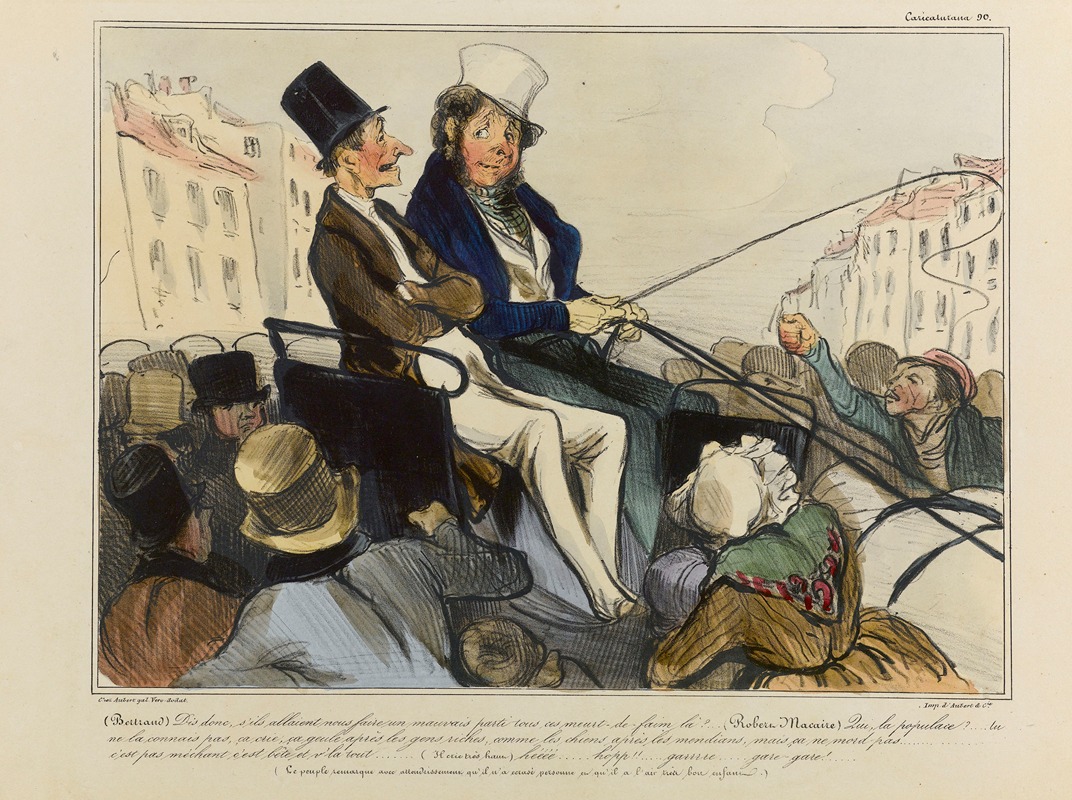
Dis donc, s’ils allaient nous faire un mauvais parti tous ces meurt-de-faim-là …
A hand-painted replica of Honoré Daumier’s masterpiece Dis donc, s’ils allaient nous faire un mauvais parti tous ces meurt-de-faim-là …, meticulously crafted by professional artists to capture the true essence of the original. Each piece is created with museum-quality canvas and rare mineral pigments, carefully painted by experienced artists with delicate brushstrokes and rich, layered colors to perfectly recreate the texture of the original artwork. Unlike machine-printed reproductions, this hand-painted version brings the painting to life, infused with the artist’s emotions and skill in every stroke. Whether for personal collection or home decoration, it instantly elevates the artistic atmosphere of any space.
Honoré Daumier's artwork "Dis donc, s’ils allaient nous faire un mauvais parti tous ces meurt-de-faim-là …" is a lithograph created in 1834 as part of his satirical series "Les Robert Macaire." Daumier, a prominent French artist, caricaturist, and social commentator, was known for his sharp critiques of 19th-century French society, politics, and class structures. This particular work is a reflection of his ability to blend humor with biting social commentary.
The lithograph depicts a scene with characters engaged in dialogue, with the title translating roughly to "Say, what if all those starving people were to turn against us?" This phrase encapsulates the tension between the wealthy elite and the impoverished masses during a time of significant social and economic disparity in France. The artwork is part of Daumier's broader critique of societal inequalities and the exploitation of the working class by the bourgeoisie.
"Les Robert Macaire" was a series of lithographs published in the satirical newspaper Le Charivari. The series featured the fictional character Robert Macaire, a con artist and swindler who represented the unscrupulous behavior of the bourgeoisie. Through this character, Daumier exposed the greed, corruption, and moral hypocrisy of the upper classes. The series was immensely popular and resonated with the public, as it captured the frustrations and discontent of the time.
Daumier's work was heavily influenced by the political and social climate of 19th-century France. The July Monarchy (1830–1848), under King Louis-Philippe, was marked by growing inequality and unrest among the working class. Daumier used his art to challenge authority and highlight the struggles of ordinary people. His lithographs often employed satire and exaggeration to convey his messages, making them accessible and impactful to a wide audience.
The medium of lithography allowed Daumier to produce his works in large quantities, ensuring their widespread distribution and influence. His ability to capture the essence of societal issues with wit and precision solidified his reputation as one of the most important social commentators of his time.
Today, "Dis donc, s’ils allaient nous faire un mauvais parti tous ces meurt-de-faim-là …" is recognized as a significant example of Daumier's talent for combining artistic skill with incisive social critique. It remains a powerful reminder of the enduring relevance of art as a tool for addressing social and political issues.





